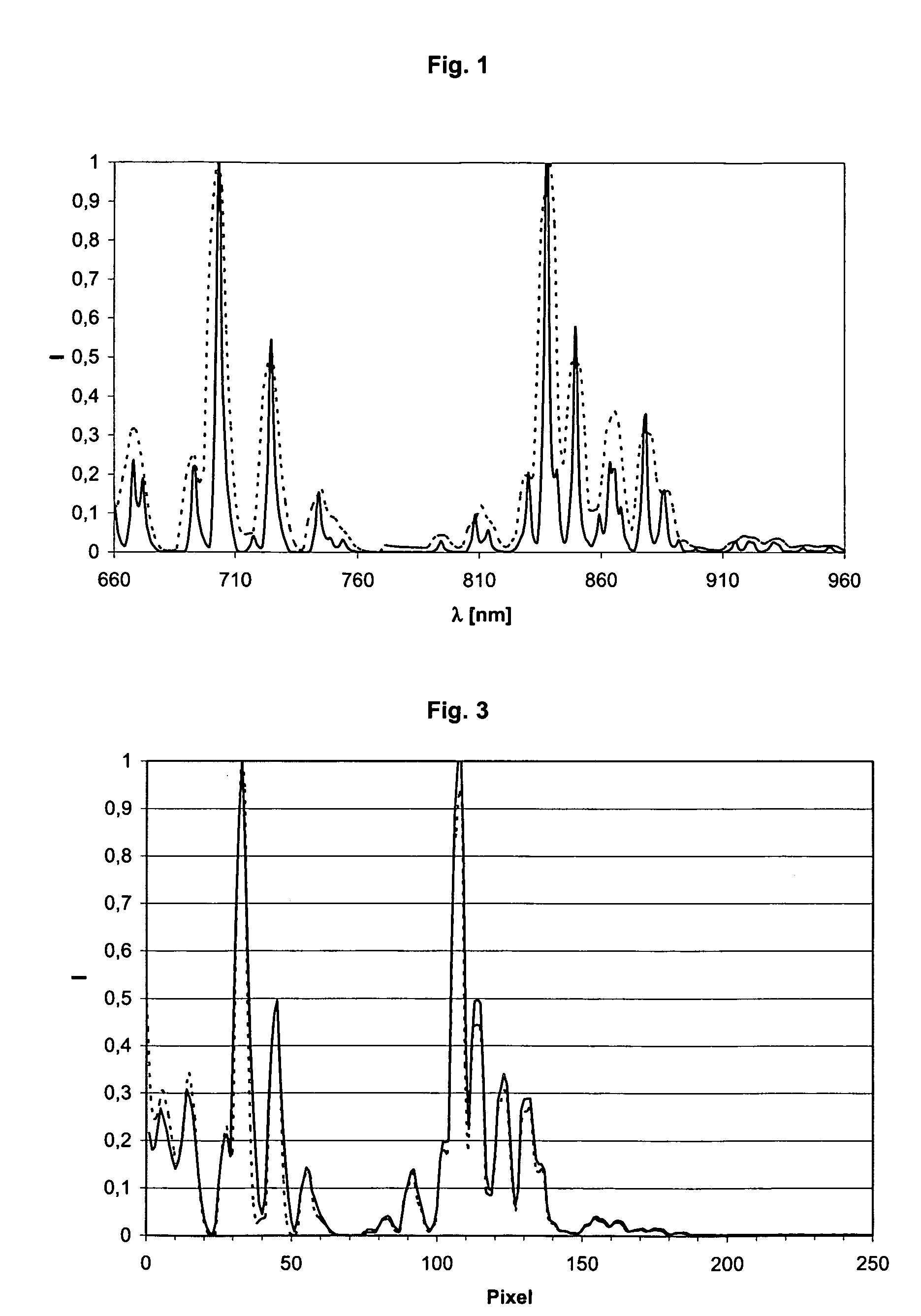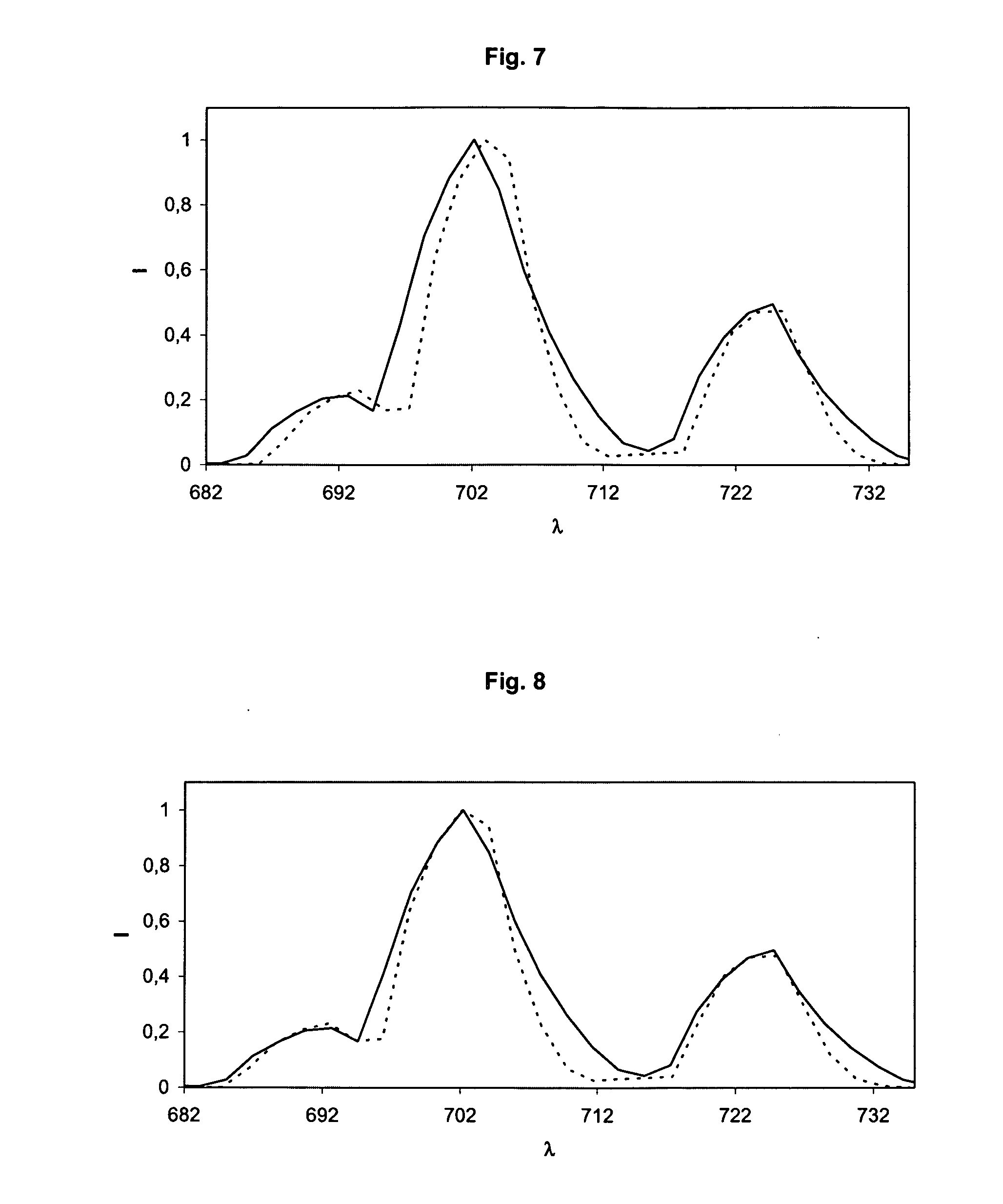Method for the wavelength calibration of a spectrometer
a spectrometer and wavelength calibration technology, applied in the direction of instruments, spectrometry/spectrophotometry/monochromators, optical radiation measurement, etc., can solve the problems of inability to produce calibrators for similar instruments produced by one manufacturer, and inability to achieve the spectral response of the instrument. , to achieve the effect of high calibration accuracy, cost-effectiveness and complicated calculation steps
- Summary
- Abstract
- Description
- Claims
- Application Information
AI Technical Summary
Benefits of technology
Problems solved by technology
Method used
Image
Examples
example 1
[0110]Example 1 describes a specific embodiment of a method according to the invention analogous to the third typical embodiment.
[0111]A wavelength calibration is carried out according to the inventive method on a grating spectrometer designated CP20 from the Jobin Yvon Company (Longjumeau Cedex, France). This spectrometer has a linear line sensor with 256 pixels, can resolve a wavelength range of 638 to 1038 nm, and has a spectral bandwidth of about 8 nm.
[0112]A first CP20 spectrometer is defined as the primary spectrometer, and another CP20 spectrometer of the same type is defined as the secondary spectrometer. A first wavelength assignment which was carried out in the factory by the manufacturer using a conventional peak search method was available for both spectrometers and enclosed with the spectrometers. In the specific case the wavelength assignment is a polynomial of the 3rd degree (λ−a0+a1 x+a2 x2+a3 x3) and the four coefficients a0, a1, a2 and a3 for the wavelength assignm...
example 2
[0122]In order to demonstrate and quantify the advantages of the method according to the invention compared to the previously used peak search methods, the wavelength calibration of spectrometers is simulated on a spectrum of a neon lamp in a wavelength range of 655 to 1035 nm at various calculated broadenings of the band-width. A neon spectrum is measured with a grating spectrometer of the type CP140 from the Jobin Yvon Company (Longjumeau Cedex, France) with a spectral band-width of 2 nm as a basis for the simulation. Simulated spectra with a respective bandwidth of 6, 7.5, 9 and 12 nm are calculated from this data set by a sliding multiplication using a Gauss curve adapted to each case. Wavelength calibrations are carried out on these various spectra a) with the peak search method and b) with the method according to the invention and the respective maximum errors are calculated over the entire wavelength range. These errors are listed in table 1. The errors are calculated in this...
PUM
 Login to View More
Login to View More Abstract
Description
Claims
Application Information
 Login to View More
Login to View More - R&D
- Intellectual Property
- Life Sciences
- Materials
- Tech Scout
- Unparalleled Data Quality
- Higher Quality Content
- 60% Fewer Hallucinations
Browse by: Latest US Patents, China's latest patents, Technical Efficacy Thesaurus, Application Domain, Technology Topic, Popular Technical Reports.
© 2025 PatSnap. All rights reserved.Legal|Privacy policy|Modern Slavery Act Transparency Statement|Sitemap|About US| Contact US: help@patsnap.com



